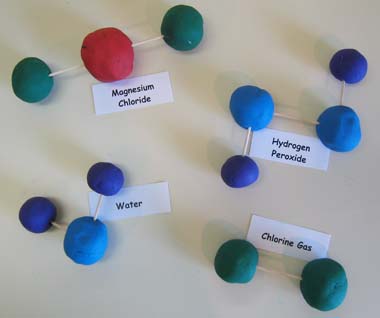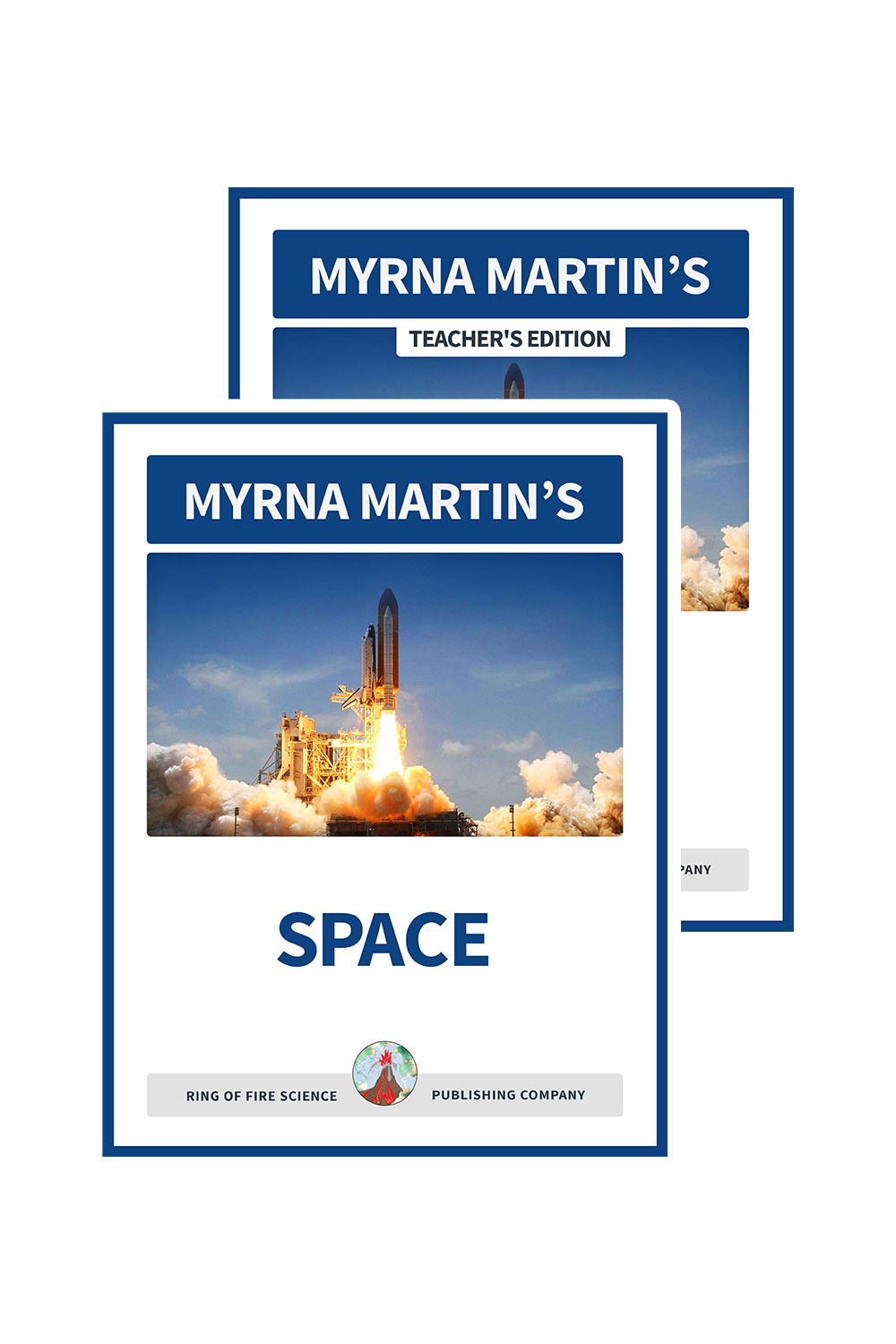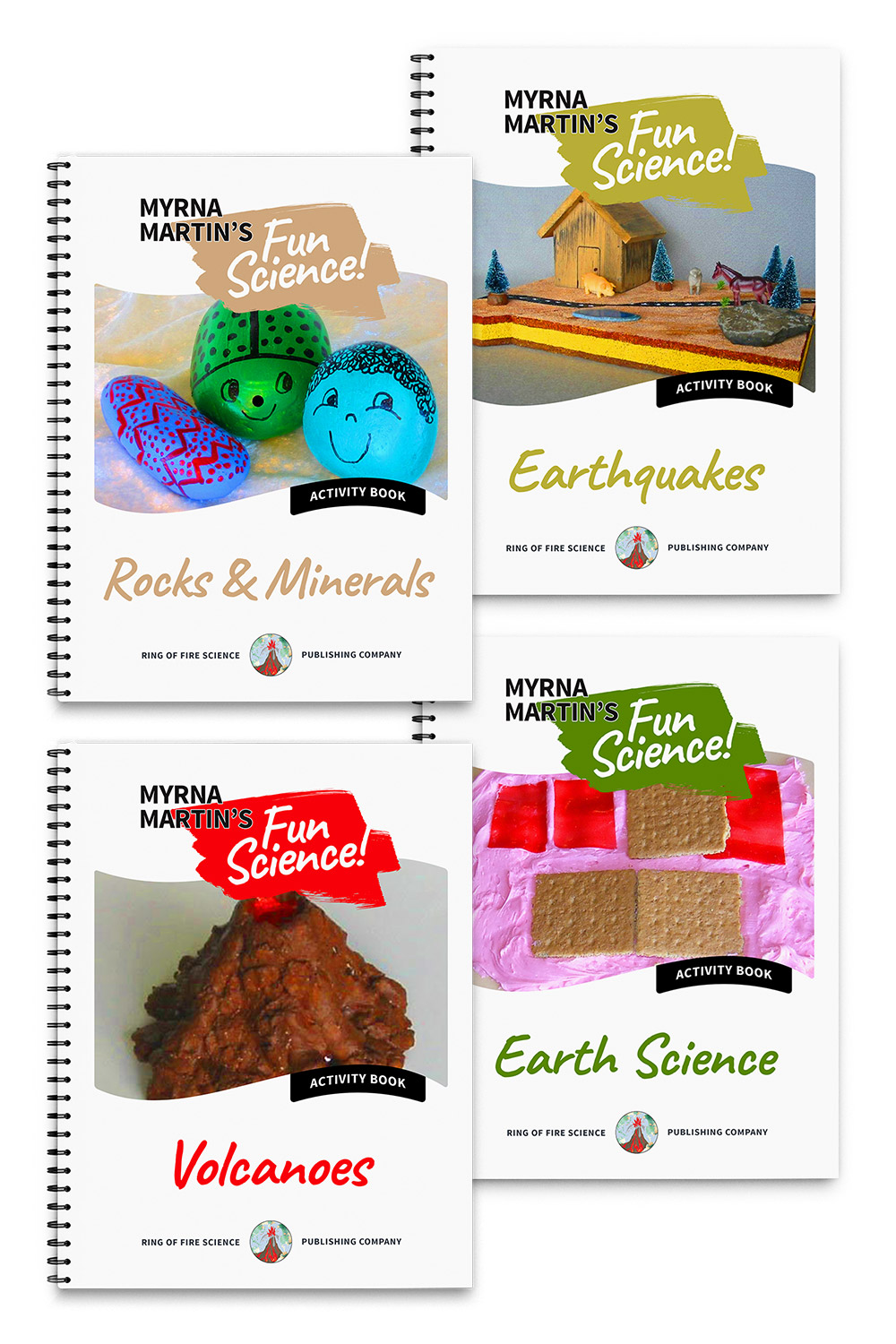Physical Science Activities
Physical science activities creating molecules
Creating molecules using clay
In these physical science activities you will create molecules from clay. Atoms are combined to form molecules. You will use toothpicks to hold the atoms together as they form different molecules. The molecules you will create are chlorine gas, magnesium chloride, hydrogen peroxide, and water.
Materials
- Yellow clay
- Green clay
- Orange clay
- Red clay
- Toothpicks
Directions
- Chlorine molecule - two green balls of clay
- Join the two green balls of clay together with a toothpick.
- Chlorine gas is green and used to purify drinking water. It is also used in the manufacture of pesticides, plastic and synthetic rubber.
- Magnesium Chloride molecule - one large orange ball and two green balls of clay.
- Attach the large orange ball (magnesium atom) to one of the green (chlorine atom) balls with a toothpick.
- Lay the molecule on the table and add the second green ball on the opposite side of the orange ball.
- Magnesium chloride is a naturally occurring mineral found in the ocean, Great Salt Lake and other bodies of salt water.
- It is used to melt ice on roads and sidewalks. It is also used on meats for flavoring.
- Hydrogen Peroxide - two small yellow balls and two medium size red balls of clay.
- Connect a yellow ball (hydrogen atom) to a red ball (oxygen atom).
- Repeat this step so you have two yellow balls attached to two red balls.
- Place the four balls on the table so the oxygen atoms can be attached and the hydrogen atoms point in opposite directions.
- Hydrogen peroxide is a colorless liquid that is used to bleach cotton fabrics. It is also used for rocket fuel.
- Water molecule - Two small yellow balls (hydrogen atoms) and one medium size red ball (oxygen atom)
- Connect the two small yellow balls to the red ball at about they are about 100 degrees apart and the molecule resembles a Mickey Mouse hat.
- Water is a universal solvent and dissolves most molecules. Molecules like oil are repelled by the molecule.
More Links to Science Activities
Dinosaur Footprints - Fossil Activities Create sedimentary dinosaur footprints using miniature dinosaurs in this Earth science activity.
Loop Airplanes - Flight Activities Get some friends together and build loop airplanes made from straws and circles of construction paper.
Tree Rings - Life Science Activity You can be a science detective and discover what the weather was like by looking at tree rings. Learn more in this fun activity.
Globe Toss - Earth Science Activity Compare the size of the world's oceans in this activity that is just a toss up of fun!
Earthquake Waves - Simple Science Activities Earthquake waves cause rice to shake rattle and roll in this science activity.
Earth's Elements - Physical Science Activities Create four common molecules out of clay in these physical science activities.
Science Activities Fun and easy activities that demonstrating science concepts can be found on this page
Home Page The Science Site contains information on our planet, volcanoes, science projects, earthquakes and much more.
Kids Fun sCIENCE bOOKSTORE
Check out Myrna Martin's award winning textbooks, e-books, videos and rock sets. The Kids Fun Science Bookstore covers a wide range of earth science topics. Click here to browse.
Sign up to our monthly newsletter and receive our FREE eBook containing 3 fun activities that don’t appear in any of our other books!
The Kids Fun Science monthly newsletter will include the following: current events, weird and fantastic facts, a question of the month, science trivia and the latest new content from our website.
We respect your privacy and you can be assured that we will never share your email address or use it for any other purpose than to send you our newsletter.










